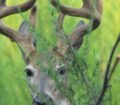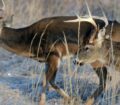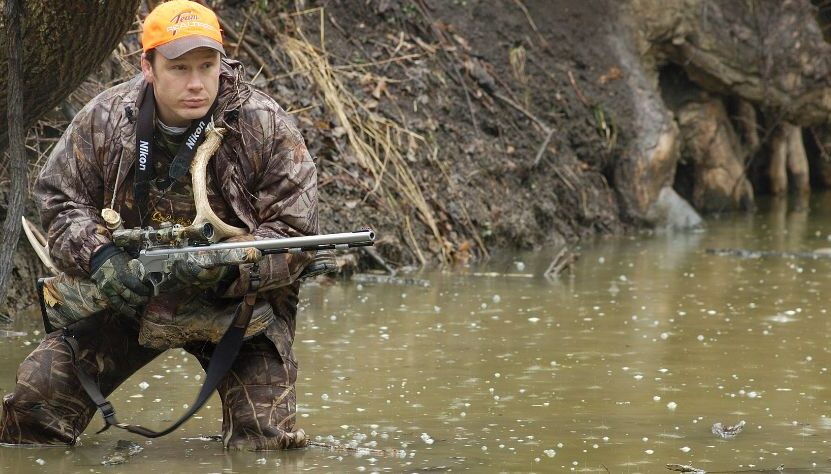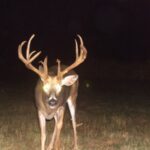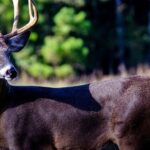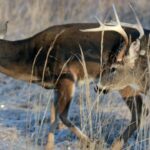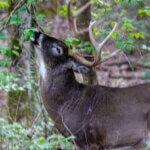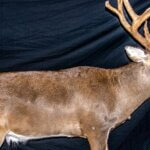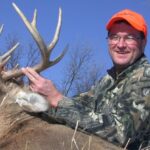Editor’s Note: If you’re still ready to hunt deer, hunters all across the U.S. have learned that they can be successful in taking big bucks in February in the South. You’ll have to study each state’s regulations in Alabama, Florida, Mississippi, Texas, and Virginia to learn when deer season ends, generally around February 10th. The rut is still taking place at the end of January and in February in many sections of the South. If you don’t have a place to hunt, check out some of the fine hunting lodge operations available or look at public lands in each state and their regulations. Although February deer are primarily nocturnal, you can find them and possibly take your best deer of the year.
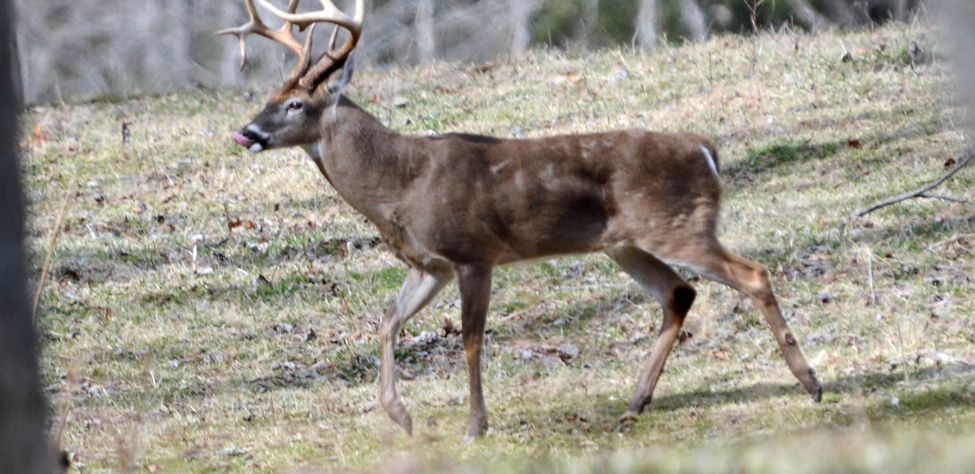
Jesse Owen of Tennessee had permission to hunt the 25 acres behind his house and first saw a huge buck with many points on his massive, wide rack on his trail camera. As Owen recalls, “I estimated him to be a 12-pointer, scoring about 150 inches. I never saw or got photos of him during daylight hours. He was nocturnal.”
Owen didn’t know how to take this big buck. But instead of saying, “There’s no way to take this buck legally,” Owen decided he would study all the articles he could about taking nocturnal bucks.
What Jesse Owen Learned about Taking Primarily Nocturnal February Bucks
Owen learned that three ingredients must come together to take a big, nocturnal, late-season buck. “I needed to hunt the buck.
- “During the rut, when an older-age-class buck would break with his normal routine and start chasing does to breed;
- “When the weather was changing—either from warm to cold or from cold to warm—causing mature bucks to move,
- “By being patient, turning down other shootable bucks, and
- “By spending time in my stand.”
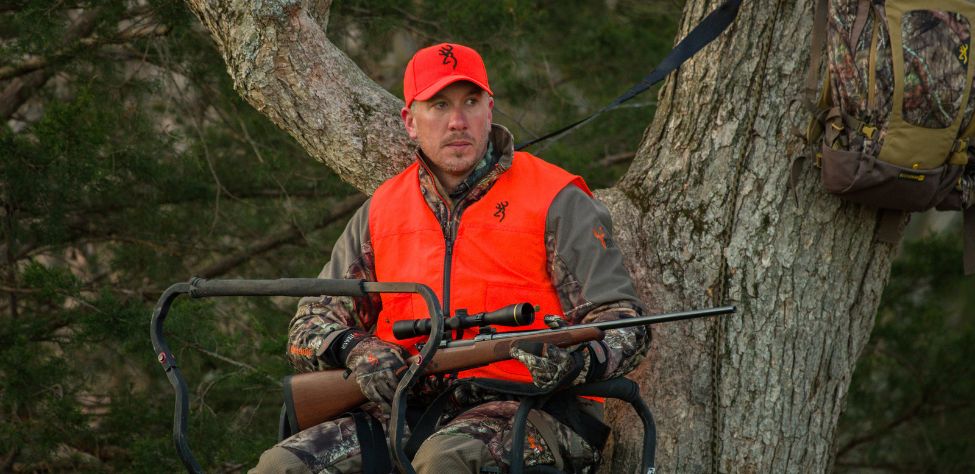
Once Owen saw that a major weather change would occur one afternoon with a cold front moving in from the northwest, the temperature was supposed to drop dramatically, and a light rain with the possibility of snow was due to fall too, he realized that on this day, everything was right to take a trophy buck. He thought, “If that monstrous buck is ever going to change his habits and appear in the daytime, it should be today.”
After getting in his blind, Owen looked out its side window and spotted the big buck jumping the fence, about 150 yards away from his blind, coming down a trail. Once the buck appeared, Owen says, “I was so amazed at how big this buck’s antlers were that I hesitated. Then that buck looked directly at my ground blind, and I shot this big, usually nocturnal buck.”
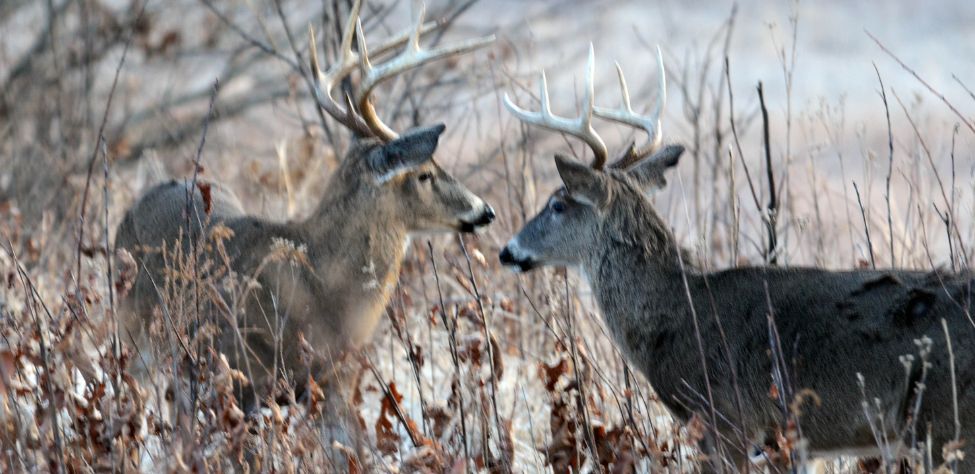
Many hunters would have hoped to get lucky at some point during the three seasons that Owen hunted and researched this big buck. Instead, Owen chose the very best day of deer season, which was in February, to hunt that buck when the odds were the greatest that a huge buck like this would show up, and you can too.

How to Hunt and Take Big Buck Deer on Small Properties
In this book, you’ll hear from 14 hunters who either have gained permission or leased properties as small as six acres to as much as 250 acres, and how they consistently take older-age-class bucks off these little lands.
VERSIONS: AUDIBLE, KINDLE & PRINT

Jim Crumley’s Secrets of Bowhunting Deer
Using a black magic marker and a gray work jumpsuit, Jim Crumley of Buchanan, Virginia, drastically changed the nature and purpose of hunting camouflage when he created the first sportsman’s camouflage – Trebark. Crumley’s love of bowhunting and his desire to be more invisible changed hunting clothing forever.
In this hunting guide, he shares the wisdom that he’s learned throughout his lifetime about how to be a hunter, how to find a deer lease, how to scout for deer, and more.
Special features include how to:
- Have a magic 60 acres to hunt
- Decide the best equipment to use
- Find deer year-round
- Locate land to hunt
- Know the best place to put your tree stand
- Get bucks within bow range
VERSIONS: AUDIBLE, KINDLE & PRINT

How to Hunt Deer Like a Pro
How do you know if the land you hunt has a trophy deer on it? Wildlife manager Bob Zaiglin, of Uvalde, Texas and Jim Crumley, the father of modern-day hunting camouflage, tells you how to find out. GPS can make finding and taking that trophy buck easier. This hunting guide will teach you how to hunt big bucks where no one else can find them, how to call deer, and how to become versatile as a deer hunter, so that if one deer tactic doesn’t work, another one will.
In the chapter, “How to find Bucks at Scrape,” Dr. Keith Causey, retired professor of Wildlife Science at Auburn University, describes the best way to hunt a scrape.
Brad Harrison of Neosho, Missouri, is a nationally-known videographer, professional deer hunter and master at calling deer. Another master is Will Primos of Primos Game Calls. These two experts will tell the best deer calls and when to use them in this book.
And for over 20 years, Bo Pitman, lodge manager of White Oak Plantation, has been studying deer movement patterns. He explains what types of conditions are best for predicting deer movement.
VERSIONS: AUDIBLE, KINDLE & PRINT

Deer hunting and deer hunters are drastically changing each year. To learn new techniques for hunting deer and have more places to hunt, I’ve interviewed some of the best deer hunters in the nation and share their tactics in How to Hunt Deer Like a Pro: Volume II.
In Chapter 10, Jacob Lamar tells you his tactics for consistently taking older-age-class bucks on public lands in several states. Chapter 11, Bob Walker explains how to find places on public lands where you can hunt that 99 percent of the other hunters never have considered hunting. The Bonus Chapter with David Ramey tells you how, where, when and with what equipment to take big Kansas bucks on public lands by hunting in 100-degree weather when others won’t hunt.
Chapter 13, Mark Drury, his family and his guests take mature bucks every season by having more small places to hunt rather than one large property. Drury explains the strategy of having satellite farms to hunt that only may be 50-150 acres each or less. Chapter 15, Pat Reeve, who hunts far-northern states and Canada, says, “I don’t like hunting for mature bucks until the weather is 20 degrees or less.” Chapter 4, Dr. Larry Marchinton says that funnels are the most-reliable stand sites to hunt for big bucks and tells why.
VERSIONS: AUDIBLE & PRINT
Tomorrow: Factors Impacting Taking Big February Deer

